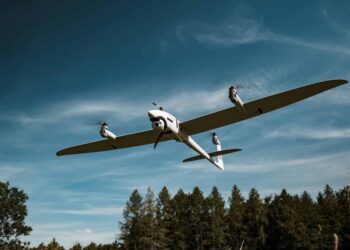Lockheed Martin, FORT WORTH, Texas: The Lockheed Martin F-35 Joint Strike Fighter completed “leak-free” fuel-system checkout testing achieving another major success milestone on the fighter program. Engineers and technicians have concluded, on schedule, an extensive fuel-system checkout on the first Joint Strike Fighter and are making final preparations for a series of structural tests on the aircraft planned to begin today.
The fuel-system tests included methodically filling, measuring, weighing and emptying each internal tank with jet fuel, leading up to filling all tanks at operational pressure. The air-refueling system also was checked for proper function. Throughout the testing process, the fuel-system proved to be free of leaks. “Fuel leaks are a typical problem for modern high-performance fighter aircraft, so this success is an early indication the F-35 is a solid design and a well-built fighter aircraft,” said Doug Pearson, vice president of the F-35 Integrated Test Force. “The F-35 is a stealthy aircraft built with very tight tolerances, and it is remarkable that during the entire comprehensive fuel-system testing there were no external leaks from any of the fuel tanks.”
The fuel-system checkout concluded on March 12 and took less than a third of the time to complete than in other recent developmental aircraft programs. The F-35 was then moved to a Lockheed Martin run station to begin equipment and component installations for structural-coupling testing and ground- vibration testing, set to begin March 24.
Structural coupling is the interaction between the flight-control system and the structural dynamics of the airframe. It is tested to ensure that F-35 flight controls do not interact with structural vibrations within the aircraft. Ground-vibration tests certify the airframe is resistant to flutter, which can cause sudden, destructive vibration levels in an aircraft.
The inaugural flight of the first F-35, a conventional takeoff and landing version, remains on schedule for this fall. The aircraft is the first of 15 F- 35s that will be flight-tested, and another seven that will undergo a battery of ground-based tests. Additionally, a full-scale, high-fidelity F-35 model will be used to validate the aircraft's stealth properties.
The stealthy F-35 is a supersonic, multi-role, 5th-generation fighter designed to replace a wide range of existing aircraft, including AV-8B Harriers, A-10s, F-16s, F/A-18 Hornets and United Kingdom Harrier GR.7s and Sea Harriers.
Lockheed Martin is developing the F-35 with its principal industrial partners, Northrop Grumman and BAE Systems. Two separate, interchangeable F-35 engines are under development: the Pratt & Whitney F135 and the GE Rolls-Royce Fighter Engine Team F136. Each power plant produces 40,000 pounds of thrust, making the F-35 the most powerful single-engine fighter ever to fly.
Headquartered in Bethesda, Md., Lockheed Martin employs about 135,000 people worldwide and is principally engaged in the research, design, development, manufacture, integration and sustainment of advanced technology systems, products and services. The corporation reported 2005 sales of $37.2 billion.
Germany says adding explosive drones to weapons arsenal
Germany said Friday it would buy explosive drones for the first time as Berlin boosts investments in its armed forces...









